By Rachel Wright
With the implementation of strict public health measures in the U.S. in response to the COVID-19 pandemic, virtually no aspect of American life has been left untouched. The conduct of elections has proven no exception. In an effort to prioritize the safety of voters and poll workers alike, numerous states have instituted no-excuse absentee voting, loosened requirements for permanent absentee status, expanded vote-by-mail procedures and explored drive-up options for voting and registration.
Amid changes to the electoral process, it is important that the accessibility of polling places and mail-in options for voters with disabilities remain at the center of discussions among state and election officials. As of 2016, more than one-fourth (25%) of the total electorate reported either having a disability or having a household member with a disability. With respect to an individual, the Americans’ with Disabilities Act defines disability as “a physical or mental impairment that substantially limits one or more major life activities, a record or history of such an impairment, or a person who is perceived by others as having such an impairment.”
Disabilities may impact hearing or vision, mobility, cognition and/or the ability to live independently or care for one’s self.
As expressed in the Help America Vote Act of 2002, living with a disability does not negate one’s right to fully participate in all aspects of community life. However, lower rates of voter turnout among persons with disabilities have persisted in recent years. As states adjust voting procedures throughout the pandemic, it is crucial that these adjustments in no way infringe upon the ability of these individuals to cast their ballot. In order to do so, state officials should consider prioritizing the following:
- Ensuring voters with disabilities have access to timely and credible information regarding elections and voting procedures
- Collaborating with fellow government officials to share best practices and lessons learned
- Expanding methods of ballot distribution and return
- Ensuring accessibility of polling places and mail-in options to voters with disabilities
- Consulting with leaders within the disability community who are subject matter experts
Providing Accessible Information Regarding Elections and Voting Procedures
Access to timely and credible information regarding the conduct of elections is central to every Americans’ ability to vote. Voters with disabilities, however, disproportionately encounter barriers when attempting to access to information such as sample ballots or polling place locations. According to James Dickson, Co-Chair of the Voting Rights Committee at the National Council on Independent Living, “…most of the information that is available to you (voters without disabilities) through the election office on the internet is not accessible to many of us.”
As adjustments to voting procedures are made, it will be critical for government agencies to provide communication that is equally effective to all audiences. Potential measures include:
- Using plain language and utilizing all communication platforms to maximize understanding;
- Ensuring websites and other election materials are accessible for individuals with vision, hearing, learning, cognitive and/or dexterity disabilities
Collaborating to Share Best Practices and Lessons Learned
Government officials who are prioritizing mail balloting for state and presidential primaries may wish to collaborate with one another to implement policies based on best practices and lessons learned. States such as California that are launching innovative voting systems in upcoming elections may produce valuable insight for the elections community at large.
Furthermore, state officials stand to learn from sharing experiences regarding previous transitions to no-excuse absentee voting. Currently, 29 states and Washington D.C. offer no-excuse absentee voting, allowing voters with disabilities to request mail ballots without having to provide documentation of their disability. Wider implementation of this measure should be considered given current restrictions on non-essential medical services as well as studies detailing the relationship between no-excuse policies and increased likelihood of voter turnout among individuals with disabilities.
Expanding Methods of Ballot Distribution and Return
For voters with disabilities who can utilize paper ballots, state officials may need to consider adjusting methods of ballot return. Currently, states such as Alaska and Iowa have expressed a commitment to expanding drop box locations in anticipation of increased demand. Current public health measures may, however, make it disproportionately difficult for persons with disabilities to access the transportation necessary to reach these locations. Return by mail is an available option, however, only 16 states currently provide paid return postage. State officials should explore expanding the provision of pre-paid postage to voters alongside an increase in drop box locations to ensure all voters have equal opportunity to cast their ballot.
Secure technologies allowing for electronic ballot transmission, marking and return can be explored so that persons with disabilities can vote safely, privately and independently. Despite use of remote ballot marking and e-ballots, the privacy and independence of voters with disabilities can be compromised if a printed version of their ballot is still required. Although cybersecurity experts have expressed concerns regarding available voting technologies, the realities of the current public health crisis have demonstrated the need for further exploration within this area.
Ensuring Accessibility of Polling Places to Voters with Disabilities
Some voters with physical disabilities may require assistance marking paper ballots. mark paper ballots. Without advances in technology, voters will continue to encounter various barriers in utilizing these machines, as in previous elections. Nevertheless, information about these types of challenges can inform changes in voting procedures. These barriers include, but are not limited to:
- Systems not being set up for audio ballots or not functioning properly;
- Lack of same privacy as standard voting machines;
- Lack of training among poll workers to troubleshoot issues with accessible equipment
For states limiting the number of polling places in upcoming elections, it will be important for any adjustments to account for these barriers. For example, states such as North Dakota, Nebraska, Nevada and Michigan have restricted in-person voting on election day to persons who are unable to vote through other means. It will be important that any changes to the location or lay out of polling places do not hinder voters’ ability use these devices. The presence of poll workers who have received proper training on these devices is also critical.
Consulting Leaders Within the Disability Community Who Are Subject Matter Experts
Ensuring adequate measures are taken so that persons with disabilities can cast their vote will require consultation with leaders and experts within the disability community. According to Michelle Bishop, a Disability Advocacy Specialist for Voting Rights with the National Disability Rights Network, the biggest obstacle nationwide for ensuring accessibility is, “a lack of expertise on what disability and access actually means to the entire disability community. … People who run elections aren’t aware of what solutions there are or even where to go to get them.”
Voting Accessibility Advisory Committees stand as potential mechanisms through which consultation can be achieved. Established in 2005, New Jersey’s Voting Accessibility Advisory Committee inspects polling places for compliance and recommends ways in which accessibility standards can be improved. Among required members are county election board members, at least one individual with a disability and at least one person with training on the Americans with Disabilities Act (ADA). Throughout upcoming elections, committees such as these are uniquely positioned to offer insight and expertise to state officials to ensure continued compliance with accessibility standards.

